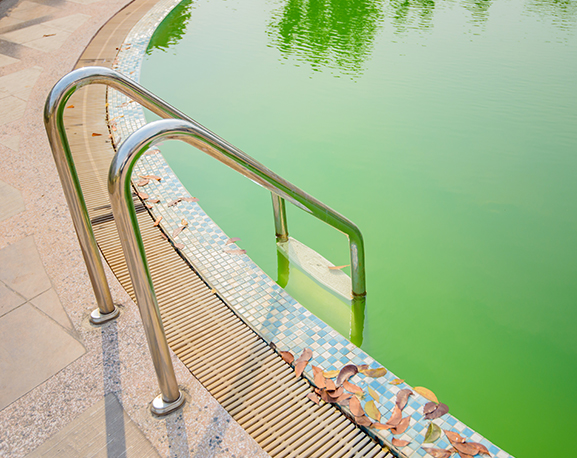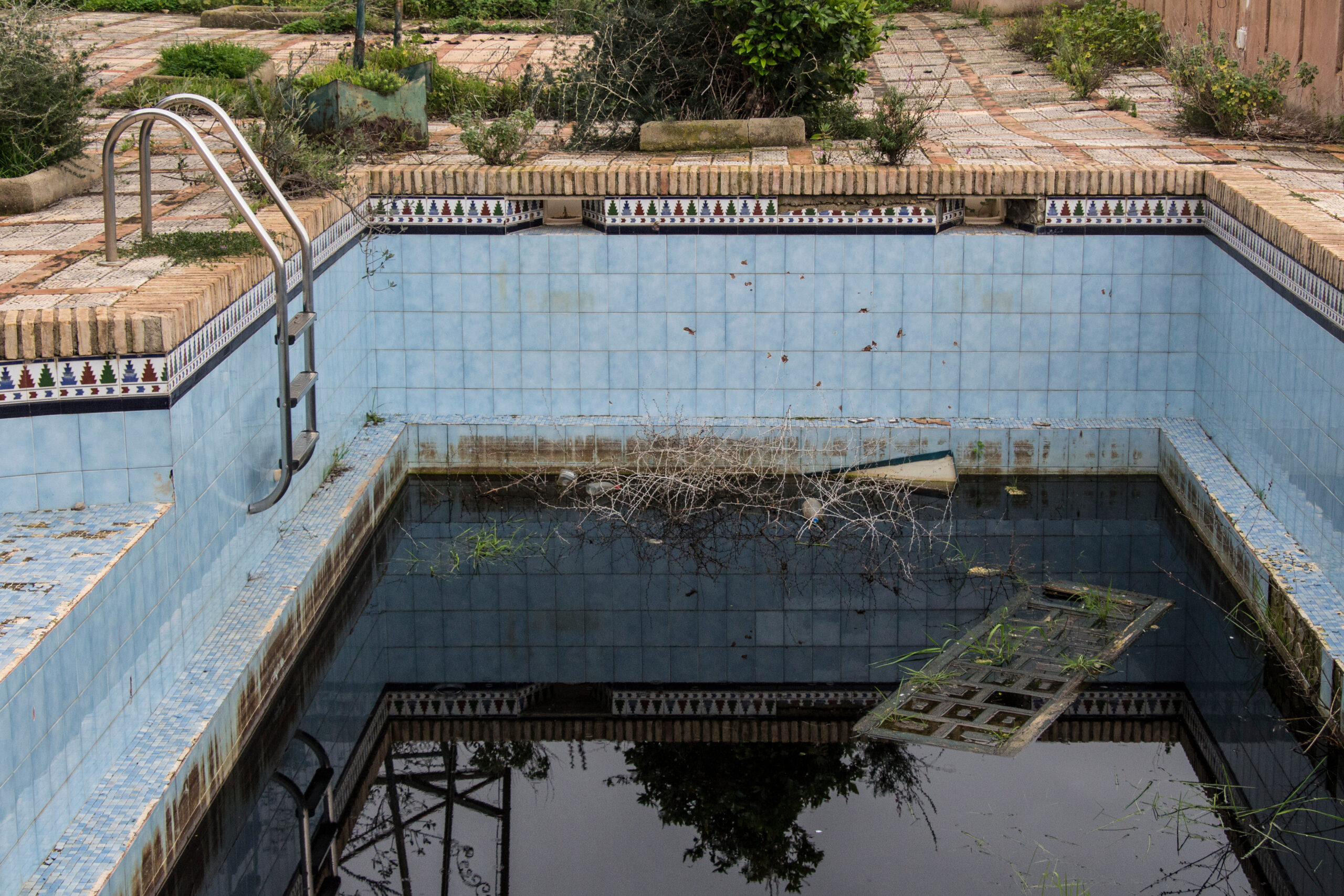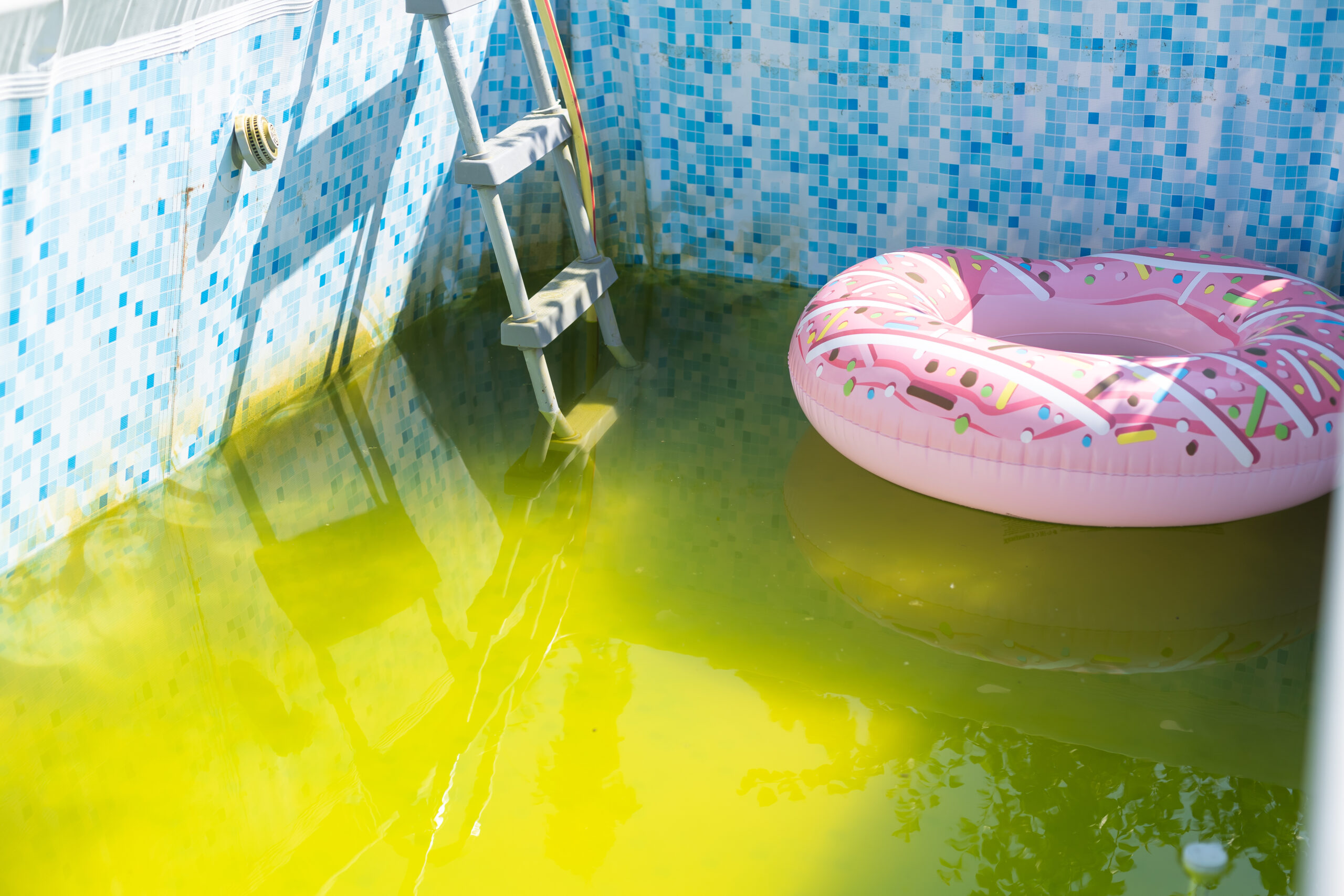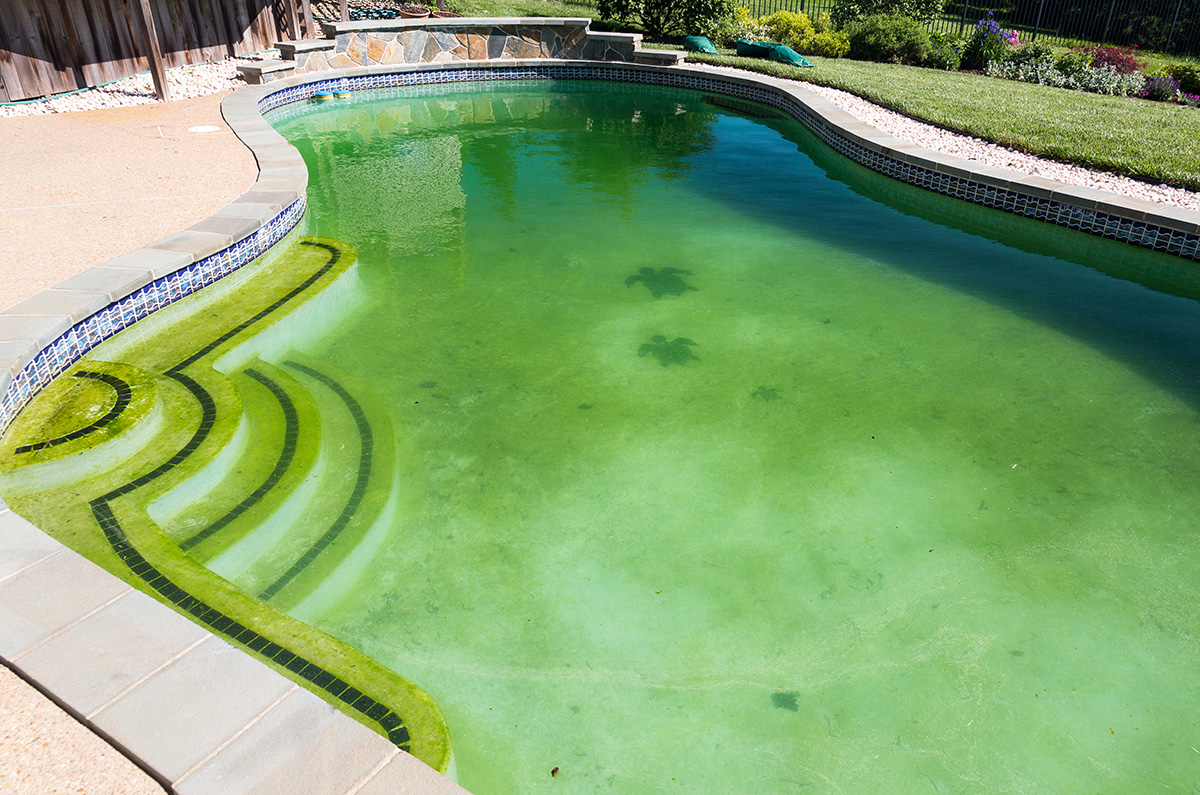Algae in swimming pools is not only unsightly but also a health hazard if left untreated. The desert climate of places like Las Vegas and Clark County can make pool maintenance even more of a challenge. Hot weather, long hours of sunshine, and wind-blown debris all contribute to algae blooms in outdoor pools. This guide will help you identify the three main types of algae that can invade your pool—green, black, and yellow—and offer advice on how to eliminate them.
While cleaning your pool might seem manageable at first, some types of algae are more persistent than others. Let’s break it down by algae type and explore how you can tackle each one, as well as when it’s time to call in a professional algae removal service.
Green Algae
Green algae is the most common type of algae found in pools. It tends to float in the water, turning your pool into what can look like a swamp. The warm temperatures and sunlight common in the Las Vegas Valley create a perfect environment for green algae to thrive.

How Does It Develop?
Green algae grow quickly, especially if the pool’s chlorine levels are too low or if there’s poor water circulation. It’s often introduced by contaminated bathing suits, toys, or wind-borne spores. A pool with green algae will appear cloudy, and the water can turn from a light green to a dark, swampy hue in a matter of days.
How to Get Rid of Green Algae
- Shock the Pool: The first step is to “shock” the pool with a high dose of chlorine. This helps kill the algae spores, stopping further growth.
- Brush and Vacuum: Use a pool brush to scrub the pool walls and floor to remove as much algae as possible. Vacuum any remaining algae out of the water.
- Check Filtration: Clean or backwash your pool filter to ensure it’s functioning properly. The algae need to be filtered out of the water effectively.
- Maintain Chlorine Levels: Once the algae are removed, test the water regularly and keep the chlorine at the appropriate levels to prevent a recurrence.
Green algae can usually be managed with consistent maintenance and chemicals, but if the problem persists, hiring a professional pool cleaning service in Clark County could save you a lot of time and frustration.
Black Algae
Black algae are one of the most stubborn and hard-to-remove types. It’s particularly notorious in areas like Las Vegas, where the combination of heat and intense UV exposure gives it the perfect environment to thrive. Black algae form dark, root-like structures that attach themselves to the pool’s walls and floors. You might notice small, black spots dotting the plaster, grout, or even tiles, and once they’re there, getting rid of them can be incredibly challenging.

Why Is It So Difficult to Remove?
Unlike green algae, black algae have a protective outer layer that makes it resistant to standard pool treatments. It roots deep into the surfaces of the pool, so even when you think you’ve scrubbed it away, the algae can still be lurking under the surface, ready to spread again.
How to Get Rid of Black Algae
- High-Strength Algaecide: Black algae often require a specialized algaecide that penetrates its tough outer layer. Look for an algaecide labeled specifically for black algae.
- Brush with a Wire Brush: Use a stiff, wire-bristled brush to break through the protective outer layers and reach the roots. This can be a physically demanding process, but it’s necessary for success.
- Shock and Treat: You’ll need to use a strong pool shock treatment, often multiple times, to kill any lingering algae.
- Scrub the Filter: Black algae can hide in the filter, so it’s important to clean or replace the pool filter during and after treatment to prevent re-infestation.
Because of how difficult black algae are to completely eliminate, many pool owners in the Las Vegas Valley opt to hire professionals. These experts have the experience and tools needed to eradicate black algae for good.
Yellow Algae
Yellow algae, also known as mustard algae, is less common than green but still problematic. It’s a powdery, yellowish film that usually appears on the shady side of the pool. Unlike green algae, yellow algae don’t float in the water, making it easier to miss at first. This type of algae is more common in warmer climates like Las Vegas, where pools may have consistent warm water temperatures.

Why Is Yellow Algae a Concern?
While yellow algae are less aggressive than black algae, they are still very resilient. It’s resistant to standard levels of chlorine and can easily come back if not fully eliminated. Yellow algae can spread to pool equipment, toys, and even swimsuits, making it easier to reinfect your pool even after you think it’s been cleaned.
How to Get Rid of Yellow Algae
- Brush and Scrub: Scrub the affected areas of the pool thoroughly, paying special attention to corners and shaded spots where yellow algae tend to thrive.
- Algaecide Treatment: Use an algaecide specifically designed for yellow or mustard algae. Make sure to follow the manufacturer’s instructions for the best results.
- Shock the Pool: Use a pool shock product with a high dose of chlorine to kill the algae spores.
- Filter and Circulate: Yellow algae are sneaky and can hide in filters or return lines. Clean the filter and run the pool pump for several hours to ensure the water circulates thoroughly.
Yellow algae, while not as pervasive as black algae, can still be quite frustrating to deal with. If you find that your efforts aren’t yielding the results you want, a pool cleaning service in Clark County can step in and handle the job with specialized treatments and equipment.
When to Hire a Pool Cleaning Service
While there are steps you can take to remove algae on your own, dealing with persistent algae issues, especially black and yellow algae, can quickly become overwhelming. For residents of the Las Vegas Valley, the combination of extreme heat, dust, and constant exposure to sunlight can make pool algae problems more frequent and difficult to manage.
Hiring a professional pool cleaning service is often the best option for removing algae thoroughly and preventing it from coming back. These experts can diagnose the type of algae affecting your pool, provide targeted treatments, and ensure your pool water is safe and crystal clear.
Additionally, professional algae removal services are well-equipped to handle resistant strains of algae that simply won’t respond to at-home treatments. Whether it’s a tough case of black algae or recurring green algae that you just can’t seem to shake, turning to a professional ensures that the job gets done right the first time.

